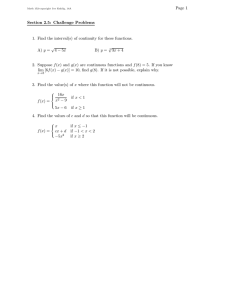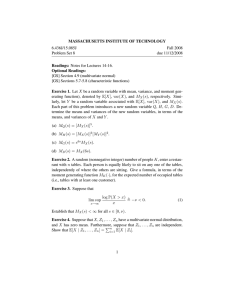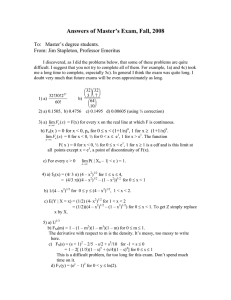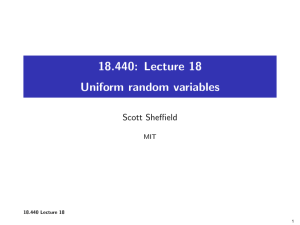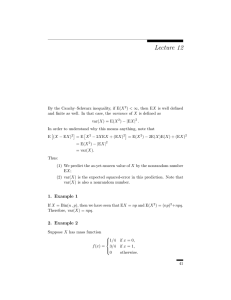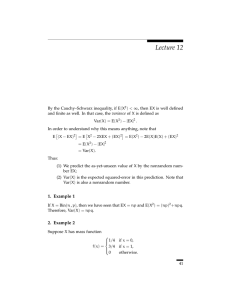MATH 418/544, Final exam Due 2013-12-17, 10:00
advertisement
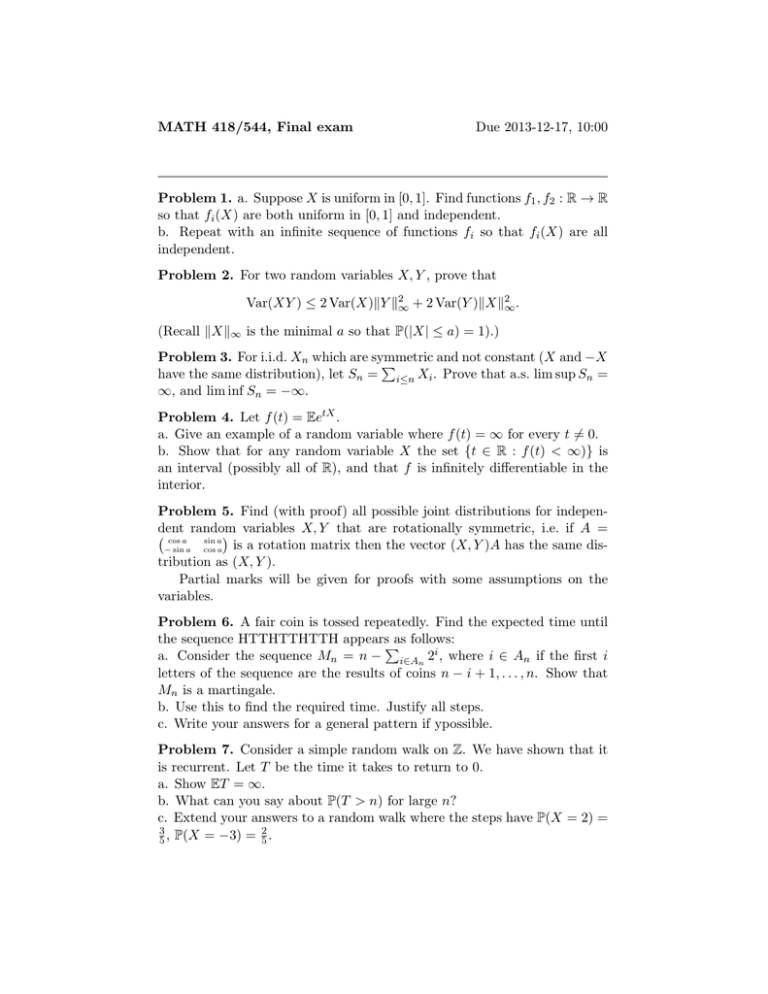
MATH 418/544, Final exam
Due 2013-12-17, 10:00
Problem 1. a. Suppose X is uniform in [0, 1]. Find functions f1 , f2 : R → R
so that fi (X) are both uniform in [0, 1] and independent.
b. Repeat with an infinite sequence of functions fi so that fi (X) are all
independent.
Problem 2. For two random variables X, Y , prove that
Var(XY ) ≤ 2 Var(X)kY k2∞ + 2 Var(Y )kXk2∞ .
(Recall kXk∞ is the minimal a so that P(|X| ≤ a) = 1).)
Problem 3. For i.i.d. Xn which are symmetric
and not constant (X and −X
P
have the same distribution), let Sn = i≤n Xi . Prove that a.s. lim sup Sn =
∞, and lim inf Sn = −∞.
Problem 4. Let f (t) = EetX .
a. Give an example of a random variable where f (t) = ∞ for every t 6= 0.
b. Show that for any random variable X the set {t ∈ R : f (t) < ∞)} is
an interval (possibly all of R), and that f is infinitely differentiable in the
interior.
Problem 5. Find (with proof) all possible joint distributions for independent random
variables X, Y that are rotationally symmetric, i.e. if A =
cos a
sin a
− sin a
cos a is a rotation matrix then the vector (X, Y )A has the same distribution as (X, Y ).
Partial marks will be given for proofs with some assumptions on the
variables.
Problem 6. A fair coin is tossed repeatedly. Find the expected time until
the sequence HTTHTTHTTH appearsPas follows:
a. Consider the sequence Mn = n − i∈An 2i , where i ∈ An if the first i
letters of the sequence are the results of coins n − i + 1, . . . , n. Show that
Mn is a martingale.
b. Use this to find the required time. Justify all steps.
c. Write your answers for a general pattern if ypossible.
Problem 7. Consider a simple random walk on Z. We have shown that it
is recurrent. Let T be the time it takes to return to 0.
a. Show ET = ∞.
b. What can you say about P(T > n) for large n?
c. Extend your answers to a random walk where the steps have P(X = 2) =
3
2
5 , P(X = −3) = 5 .
MATH 418/544, Final exam
Due 2013-12-17, 10:00
*Problem
8. Suppose Xi are independent
with finite expectation. Suppose
P
P
Y =
Xi convergesPa.s., and that
EXi also converges. Is it necessarily
the case that EY = EXi ?
Partial credit for proving the identity under more assumptions (depending on the assumptions).



